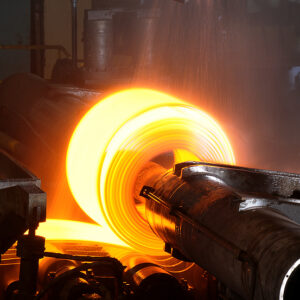The United States and the European Union are nearing an inflection point in the two-year arrangement that suspends tariffs on steel and aluminum imports, with both sides enmeshed in negotiations on the best path forward. But this potential trade deal would have broader implications, as discussions focus on critical environmental considerations that will help decarbonize one of the world’s most essential and biggest carbon-emitting industries.
Enacted in early 2022, the agreement suspended a section on national security tariffs on steel and aluminum imports from the EU and retaliatory measures implemented in response on specific U.S. exports. The deal runs through the end of 2023.
While negotiators expected to reach an agreement by the end of October, the talks continue with sides far apart about the framework for a standard in determining “green steel.”
International trade negotiations often focus on nuances and definitional subtleties. The green steel issue is that, but much more — because it is bound up in approaches for reducing carbon emissions, which will have stark implications for an industry essential for the global economy and addressing climate change.
By far, the most environmentally effective approach would be adopting the Global Steel Climate Council’s Steel Climate Standard as the global standard to measure and report steel carbon emissions. The council is a non-profit association with more than 35 international steel manufacturers, trade associations and non-governmental organizations.
Alternative steel standards, like those pushed by many steelmakers in the EU, may claim to be “green.” Still, they are far too opaque and can create a “sliding scale” that would allow for high-carbon steel to be prioritized over low-carbon steel produced using recycled materials.
The Global Steel Climate Council’s standard provides a single protocol that would apply to all steel producers equally. It would enable steel customers to compare the carbon emissions associated with steel products, regardless of how they were made. The standard focuses on reducing greenhouse gas emissions from steelmaking with a science-based approach needed to meet the goals outlined in the Paris Climate Agreement. That agreement requires signatories to reach “net zero” emissions economy-wide by 2050.
That’s where recycled steel produced in low-emission electric arc furnaces (EAF) will play a significant role. EAF steelmaking is an innovative and energy-efficient process that allows steelmakers to produce high-quality steel from 100 percent recycled material with far fewer emissions than other steelmaking, which is more dependent on raw materials with higher carbon intensities. Producing new steel from recycled steel requires 60 percent less energy while reducing carbon emissions by 58 percent, compared with making steel using new materials.
Considering that steelmaking globally accounts for as much as 9 percent of all human-caused carbon emissions annually, shifting to green steel production would significantly affect emissions reduction.
U.S. steelmakers are the global leader in producing low-carbon steel, with more than 70 percent of new steel produced using more efficient electric arc furnaces that rely on nearly 100 percent recycled steel in manufacturing. In other industrialized nations and regions, the EAF share of overall production is smaller, but with the right incentives in place — such as codifying the Global Steel Climate Council standard for green steel in any new trade agreement — green steel production worldwide will increase while emissions drop.
Using recycled steel and EAFs are critical to decarbonizing steel production and manufacturing supply chains. The Steel Climate Standard is the right approach that holds steel producers accountable and can help attain climate goals.


